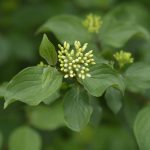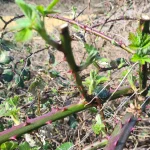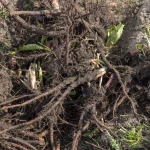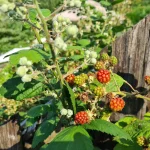Creeping Buttercup
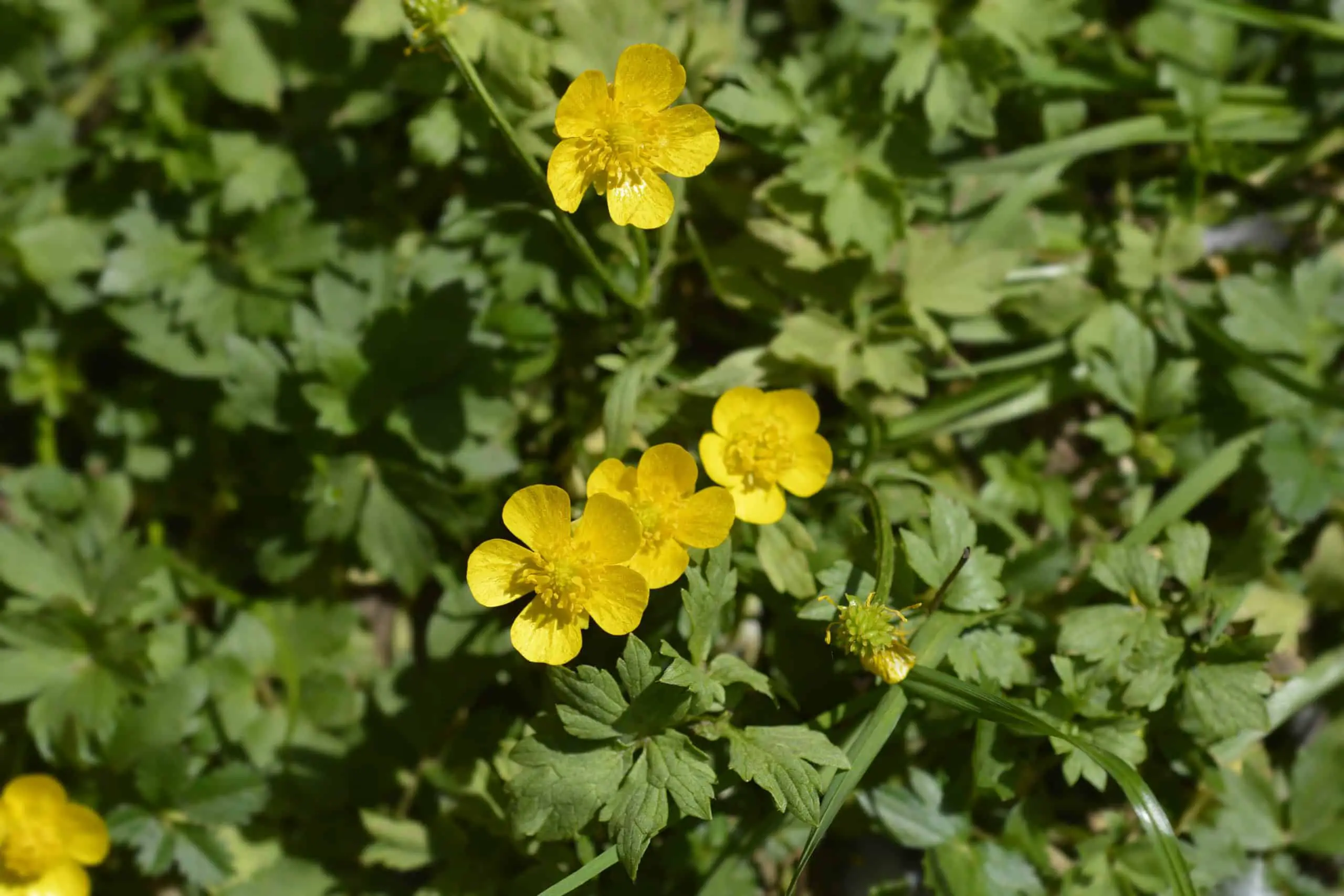
As an affiliate, we may earn a commission from qualifying purchases. We get commissions for purchases made through links on this website from Amazon and other third parties.
Creeping buttercup is a weed that can be difficult to identify and remove. This article will walk you through identifying creeping buttercup, how to use herbicides on this plant, and the best way to get rid of creeping buttercups in your garden.
This blog post will provide an in-depth guide on what Creeping Buttercup are, how they grow, and how to eradicate them from your garden.
Quick Facts
| Common names: wandering jew, cow parsnip, yellow-flowering hemlock, creeping crowfoot Scientific name: Ranunculus repens Family: Ranunculaceae Origin: native Flowering season: May and August Habitat: roadsides, fields, sidewalks, paths, lawns, gardens, river edges, grassland, woodland, meadows and hedgerows |
Creeping Buttercup Identification
Creeping buttercup grows in clusters that appear to cover the ground like a carpet of grass.
One of the most common plants in our gardens, the creeping buttercup has an unattractive appearance. Its leaves are lime green that grows to be up to 2 inches long and they have sharp edges on them.
The plant grows around 5 centimetres from the ground just like grass but it does not form clumps or patches as other weeds do because its roots spread out through cracks in pavement, sidewalks and driveways which is what makes this weed so hard for people to get rid of without herbicides
What does Creeping Buttercup look like?
Characteristics that make up the leaf, stem, root and flower are detailed below.
Creeping buttercups are perennial plants that grows in cool, damp places. They will grow to be about 2-3 inches tall and have leaves with alternating sides of rounded lobes or pointed leaflets.
The flowers come out from the top centre stem and take on colours such as white, yellowish-green, pinkish reds.
Creeping buttercups are easy to identify by their flat, creeping stems. They also have distinctive flowers that resemble a jacket button-like shape with four yellow petals and one big green centre at the bottom
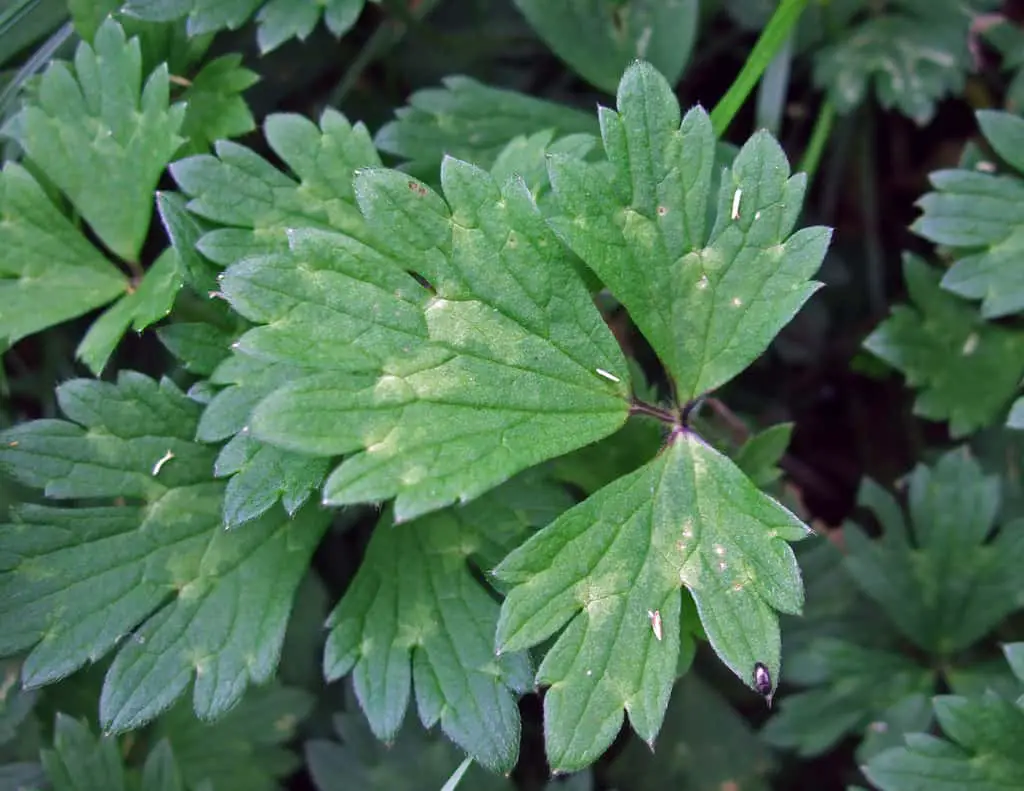
Leaves: Creeping Buttercup flowers are 5-petaled, yellow and small. They grow in clusters of 2 to 8 at the ends of branches.
The leaves of creeping buttercups have a round shape with pointed tips and edges which come off easily when touched or rubbed against something else.
The creeping buttercup has bright green leaves and looks very similar to the dandelion, but it’s much smaller and more delicate than its cousin.
Creeping buttercup leaves are dark green and can be up to six inches long. The edges have many teeth that create a wavy pattern, giving the plant its common name of “wandering Jew.”
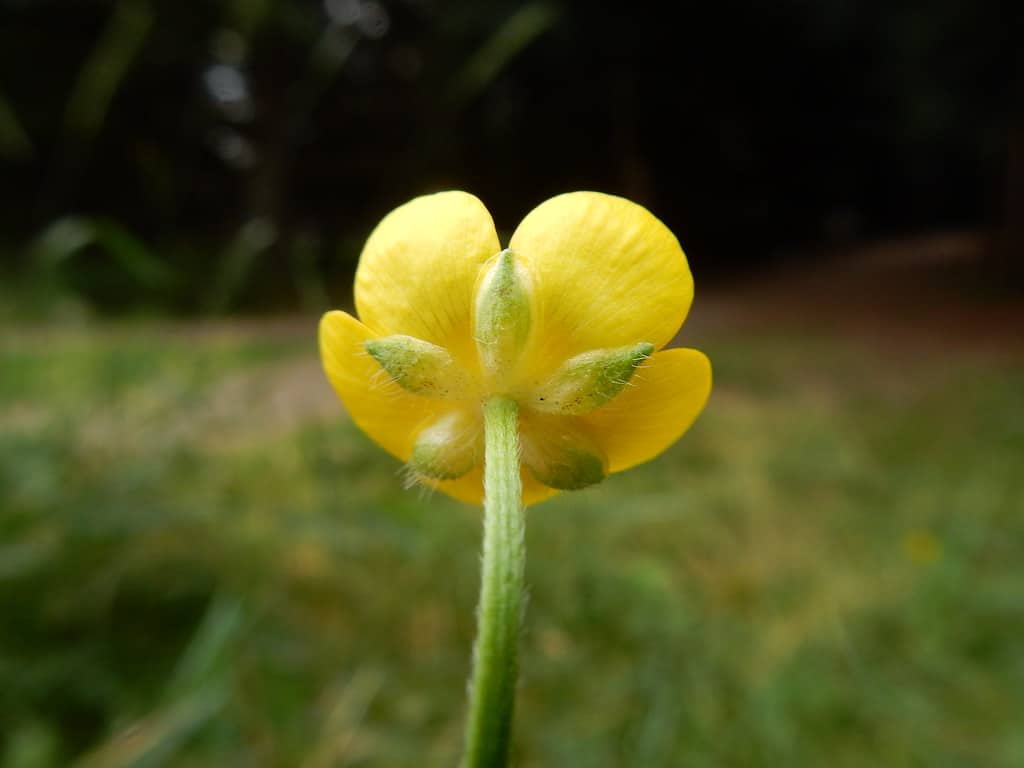
Stems: Stems can reach heights of up to 60 cm (2 feet) but are often much smaller.
Creeping buttercups are a type of weed that can grow to be about 16 inches tall and their leaves have the look of pine needles.
The stems, typically around sixteen inches in height, consist mostly of green leaf stalks with broad blades resembling those from common pines.
The foliage is actually more closely related to heathers as opposed to other types of plants which also happen to share similar characteristics such as various species of mint – spearmint being one example.
Roots: These plants have rather thin roots that can grow up to three feet deep and fifteen inches wide.
The root system starts out about four centimetres below ground level and digs down anywhere from sixteen-to-thirty centimetres before branching out into all directions for another two meters on average. It’s no wonder these pesky weeds continue popping up even after you’ve cleared an area.
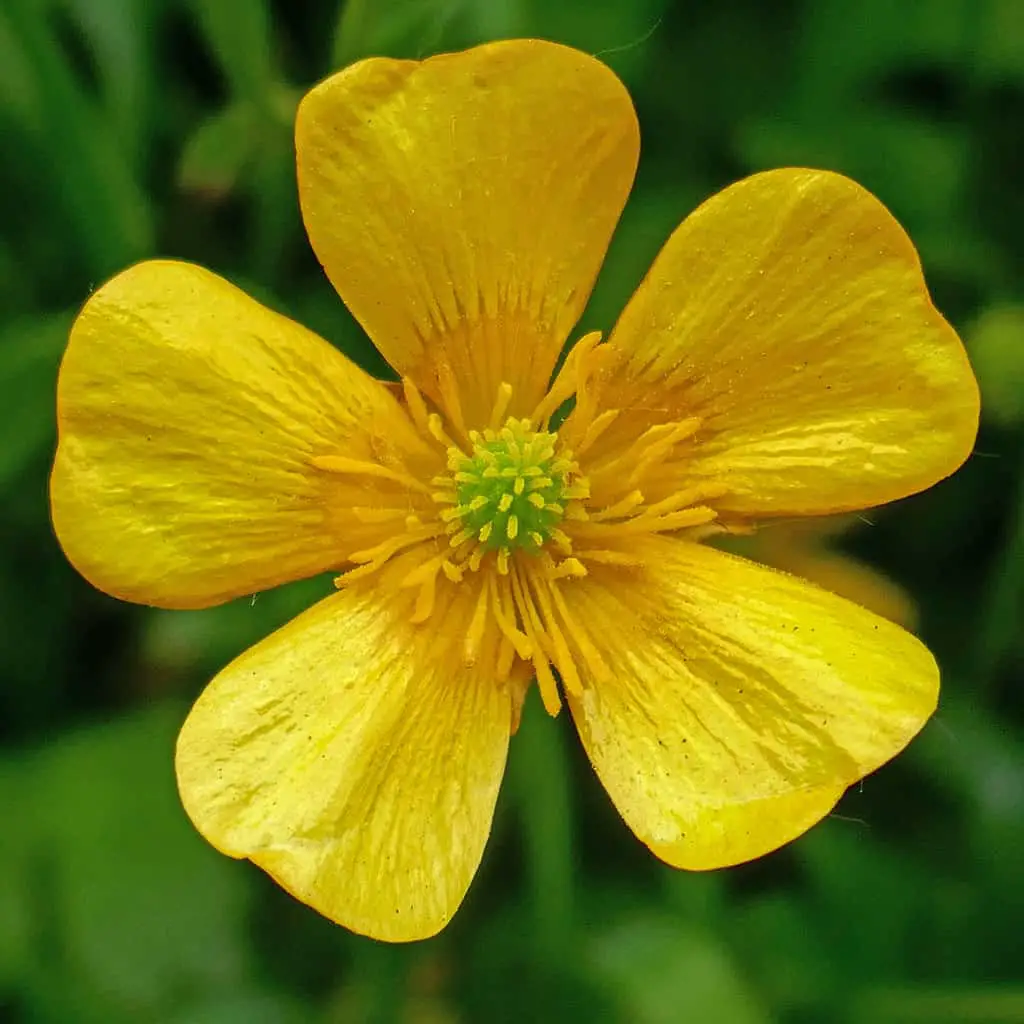
Flowers: This flower is yellow with five petals on each bloom, but often has six or more petals at times due to genetic mutation among flowering plants during pollination which also leads them to be taller than most other flowers in their family—upwards of 1 ½ foot tall when they grow fully erect instead of prostrate along the ground as many others do.
Seeds: Each plant produces about 20 to 150 seeds. Seeds can remain viable in the soil for at least 20 years, and up to 80 years, especially under acid or water-logged conditions.
A flowering shoot may yield 140 seeds and the average seed number per plant is 687. Plants from ruderal habitats tend to flower more freely perhaps because seed production is more beneficial in a disturbing situation.
Seeds are dispersed by wind, water, birds, farm animals, rodents, and other animals by adhering to them with the hooked seeds.
The Problem
Creeping buttercup is a difficult-to-control weed that can quickly smother grass in lawns and plants in beds and borders, especially in poorly drained soil. It can also reduce potassium levels in the soil and have an allelopathic influence on nearby plants.
It spreads mostly through seed, but it can also sprout from small portions of rooted stem. It expands by sending out runners that creep across the lawn/soil surface, developing firm anchoring roots at various spots along the route.
Creeping Buttercup Seasonal Changes
Creeping buttercup is a plant that changes colours with the seasons. In spring and summer, creeping buttercup has green leaves; in autumn it turns red; and then eventually winter hits, making its foliage brown.
Creeping Buttercup in Spring
The weed has a yellow-flowered vine with small, round leaves that grow upright from the ground and produce flowers at their tops during springtime.
In spring, the buttercup blooms between March and May with tiny clusters of white or pale pink flowers. The bloom can be either solitary or in clusters, depending on conditions such as soil, rainfall, sunlight and temperature.
Creeping Buttercup in Summer
The creeping buttercup is a weed that grows in shady, damp areas and will bloom from late July to early September. The flowers of the plant are small white buttons with an orange centre.
Creeping Buttercups have such tiny blooms but they’re so beautiful. In the summertime when their seeds flourish all over your garden or lawn, you’ll be able to see them grow up through blades of grass as if it were nothing at all–their roots can stretch nearly one meter beneath the ground’s surface.
Creeping buttercups also have flowers, but these only last for about two weeks before they die off so you can’t see them at all once summer has passed by.
Creeping Buttercup in Autumn
Creeping buttercup is a plant with yellow flowers that gets very tall and starts to turn orange in autumn. It has one large leaf at its base, but as it grows up off of the ground it becomes thin on top than wide below because there are no roots or leaves for support.
Creeping Buttercup in Winter
Creeping Buttercups are perennial, which means that they grow and return for multiple seasons. These plants usually have leaves of green or yellow-green colour on them but during their dormant period (winter) these colours will be replaced with tawny browns to oranges mixed together.
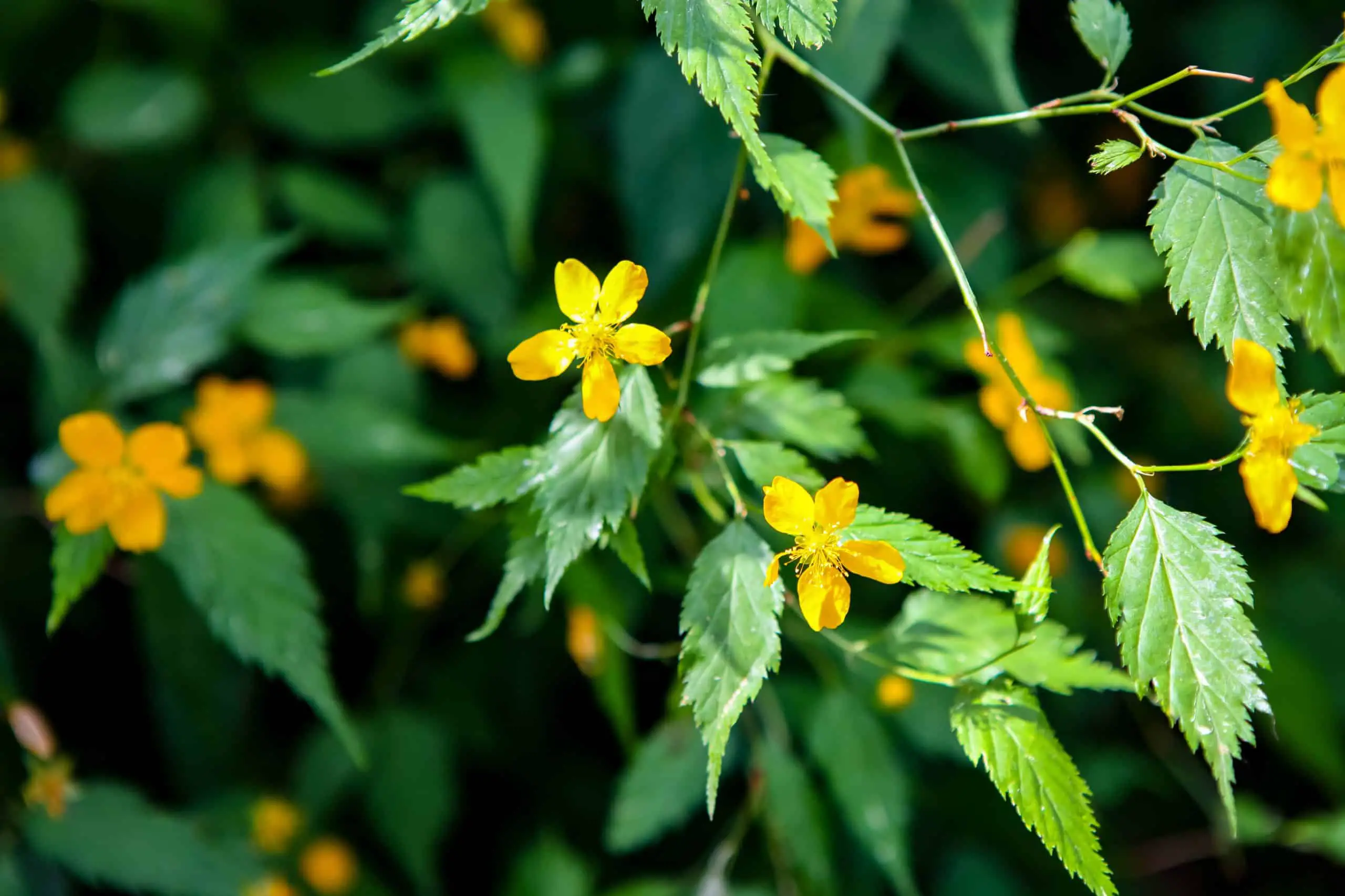
How to get rid of Creeping Buttercup
Management of this weed is a perennial issue of concern for many farmers and landowners. Here are some steps you can take to keep them from becoming an overwhelming problem on your property.
First, examine whether this may be accomplished without the use of chemicals, such as by digging out the problem or using mulch to inhibit it. Chemical controls may be required if these methods are not viable.
Creeping buttercup is a weed that grows in moist, shady areas. It can be difficult to remove because it spreads by means of underground runners or self-sown seedlings. The best way to get rid of this weed for good is with glyphosate (weed killer).
Method One – Herbicide Treatment
Glyphosate-based weedkillers (such as Roundup Fast Acting, SBM Job Done General Purpose Weedkiller, or Doff Advanced Weedkiller) are effective against creeping buttercup.
Due to the non-selective nature of glyphosate, it is critical to avoid spray or spray drift coming into touch with garden plants. In cold, calm weather, use a ready-to-use spray or the gel formulation (Roundup Gel) to treat weeds in the immediate area of garden plants.
Glyphosate will kill this weed but not other plants so should only be applied before planting anything else nearby since this herbicide does affect any plant life as well as animals using area water sources such as streams or rivers.
While spraying, branches or shoots can be kept back with canes or by covering or screening them, but make sure the weed foliage has dried before releasing the branches or removing the covering.
Method Two – Digging it out
Digging and hoeing will destroy this weed. Alternatively, smother it with a sheet of black plastic mulch. This should be left in place all summer.
Light cultivation encourages rot while discouraging regrowth by breaking up root system structures when used repeatedly over time.
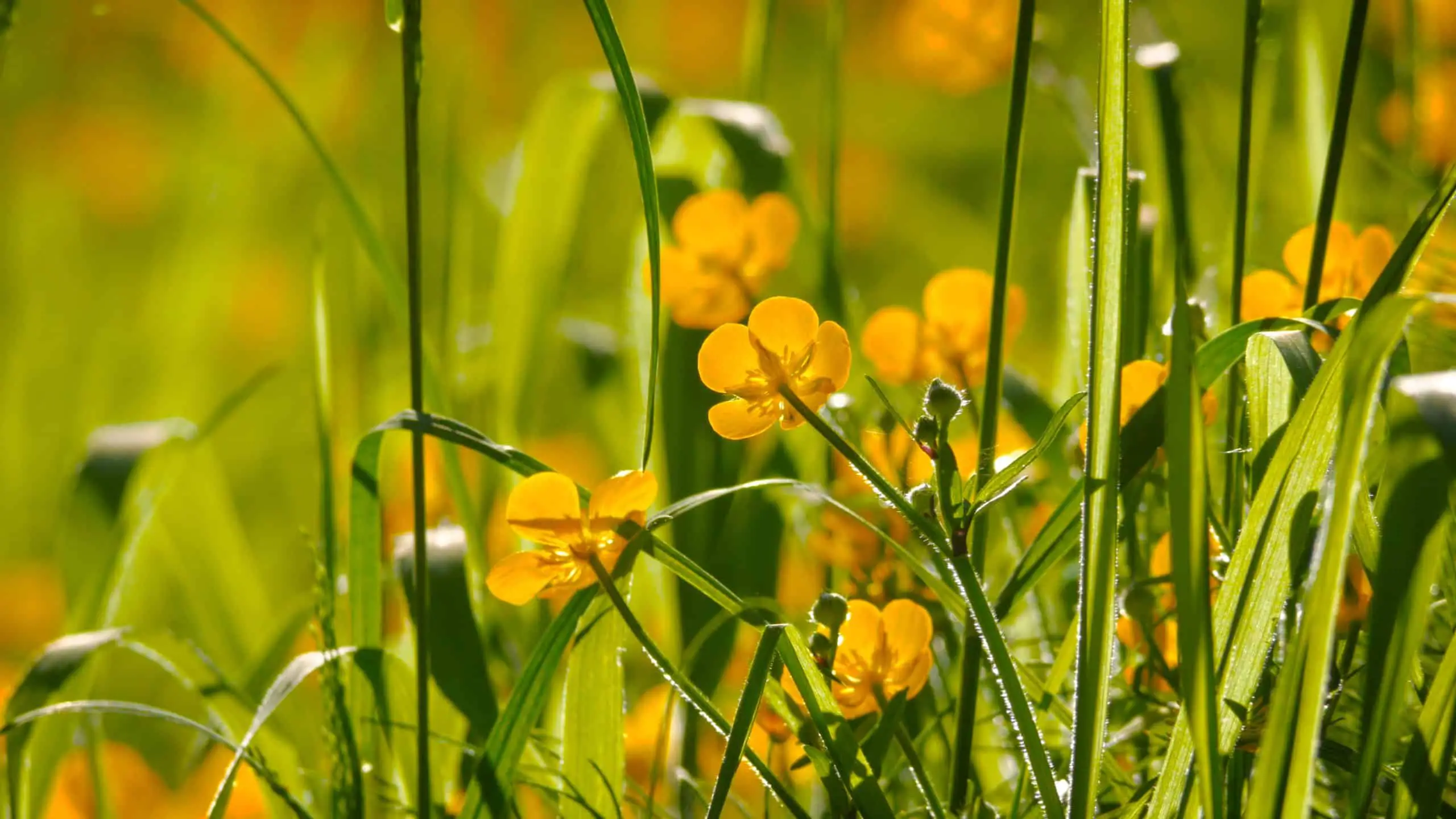
Management of Creeping Buttercup
In warmer conditions, regular and aggressive cultivation is used to manage creeping buttercup. Plants that have been severely harmed by a single isolated culture can recover.
Plants buried below 15 cm may be killed by deep ploughing, but this weed can survive shallow burial. The destruction of a grass sward, especially in the spring, creates ideal conditions for the weed’s seedlings to colonise quickly before a new crop emerges.
It’s advisable to clean up the ground after ploughing with one or more root crops before putting it back on the grass.
The most effective way to control creeping buttercup is by digging out the plants in early autumn before they have had a chance to flower.
Creeping buttercups are perennial weeds which means that they will return if you miss any sections, so be sure not to leave stray pieces behind and finish up with soil where there were once leaves or roots.
Creeping buttercup is very prolific in the spring, and it seems like there’s no end to them. They can be frustrating for homeowners who want their lawns looking nice, but they’re also a problem for farmers as well.
This weed not only looks ugly; its roots travel deep into fragile soil where delicate plants grow such as carrots or lettuce that need fertile ground to produce good yields which make creeping buttercup extremely hardy.
Luckily, we have an answer: if you don’t get rid of this plant with herbicides then pull it up by hand when your garden has been fertilized properly those pesky growths should disappear after several years.
In Conclusion
Creeping buttercup is an invasive weed that spreads quickly and can easily overrun a garden.
We hope our ultimate guide has been helpful for identifying them so we want to offer one last bit of advice about how best to remove these weeds from your property as humanely as possible.
How does Creeping Buttercup spread?
Through spreading runners and seeds.
About Us
Our goal is to empower you with knowledge of effective weed control methods that prioritize the health and well-being of your precious plants.
- Common Dogwood
- Best way to remove Common Dogwood weed
- How To Kill Brambles?
- How To Kill Bramble Roots
- Myths And Misconceptions About Brambles
Disclaimer
As an affiliate, we may earn a commission from qualifying purchases. We get commissions for purchases made through links on this website from Amazon and other third parties.
Check these out on Amazon




